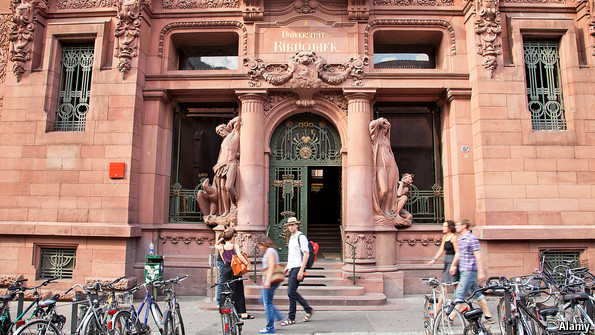A GLANCE at the global rankings of universities suggests that nothing much has changed in recent years. MIT, Stanford, Cambridge, Oxford and a few other English-speaking campuses remain at the top, fighting it out with large endowments, celebrity professors and selective entry. By contrast, universities in Germany are nowhere near the top, even after several reforms, including an “excellence initiative” since 2005. Many students waste away in overflow rooms next to packed and stuffy lecture halls. Their best hope of seeing professors is through opera glasses.
But look more closely at the rankings, and change is more evident, thinks Günther Zupanc, a biology professor who has taught in Germany, Britain and Canada and is now at Boston’s Northeastern University. Only a couple of German universities make it into the top 50: Heidelberg’s Ruprecht-Karls-University and Munich’s Ludwig-Maximilians-University usually lead the pack. Among the top 200, however, German universities have improved the most. Taken together, they have moved up by 250 places, Mr Zupanc calculates. Only Dutch universities have done better. America’s, by contrast, have crashed: since 2011 they have collectively moved down by 692 places.
via German universities: Between great and so-so | The Economist.
